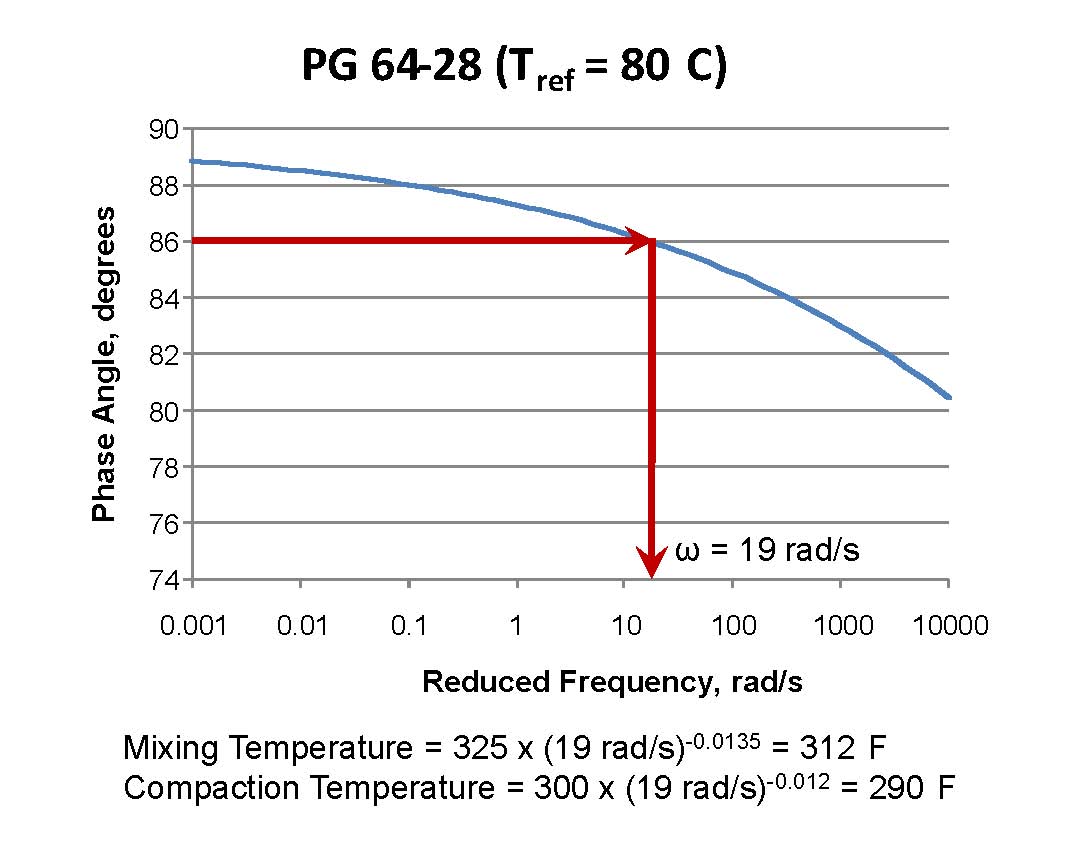
Asphalt mix design procedures have traditionally used equiviscous temperature ranges for selecting laboratory mixing and compaction temperatures, with the intent being to normalize the effect of asphalt binder stiffness on mixture volumetric properties.
Beginning as early as 1962, the Asphalt Institute’s “Mix Design Methods for Asphalt Concrete and Other Hot Mix Types (MS-2)” began recommending laboratory mixing and compaction temperature ranges based on Saybolt-Furol viscosity. In 1974, AI switched viscosity measurements to the more fundamental unit of centistokes and recommended viscosity ranges of 170 ± 20 centistokes for mixing temperatures and 280 ± 30 centistokes for compaction temperatures when performing a Marshall mix design. Twenty years later, the same ranges were recommended for Superpave mixture design, except that the units were converted to metric (Pascal-seconds.)
To determine the equiviscous mixing and compaction temperatures, the asphalt technologist simply needs to determine the viscosity of the asphalt binder at two temperatures, plot the data on a double-log graph and observe where the line connecting the two data points intersects with the appropriate temperature range.
Although the procedure for determining equiviscous lab mixing and compaction temperatures worked well in normalizing the effect of asphalt binder stiffness, for highly-modified asphalt binders the procedure often resulted in temperatures that were unreasonably high (above 350°F or 177°C). At these high temperatures during production and construction there could be problems with binder degradation, increased binder stiffening (aging), and problems in obtaining density in the asphalt mixture, leading to high in-place air voids.
To address the problem, a recent study completed for the National Cooperative Highway Research Program examined the use of mastercurves for determining the mixing and compaction temperatures for modified asphalt binders. In this procedure, a mastercurve is generated by performing a frequency sweep (0.1 to 100 rad/s) at a minimum of three test temperatures that will vary depending on the grade of the asphalt binder being tested. All asphalt binders will be tested at 80°C since it is the reference temperature in this procedure. The mastercurve is then developed (at 80°C) and the frequency is determined where the phase angle is equal to 86 degrees (see figure). This frequency (rad/s) is then input into two equations to determine mixing and compaction temperatures:
Mixing Temperature (°F) = 325w-0.0135
Compaction Temperature (°F) = 300w-0.012
The research found that the mastercurve phase angle procedure resulted in significantly lower mixing and compaction temperatures for modified asphalt binders than the older equiviscous procedure. The results were more reasonable and better matched field experience.
Based on the research, it appears that the mastercurve phase angle and the steady shear flow procedures provide better characterization of laboratory mixing and compaction temperatures than the traditional equiviscous procedure.
Information about the mastercurve phase angle procedure and the rest of the research can be found in NCHRP Report 648, Mixing and Compaction Temperatures of Asphalt Binders in Hot-Mix Asphalt(available at www.trb.org.)
Contact: Mike Anderson













